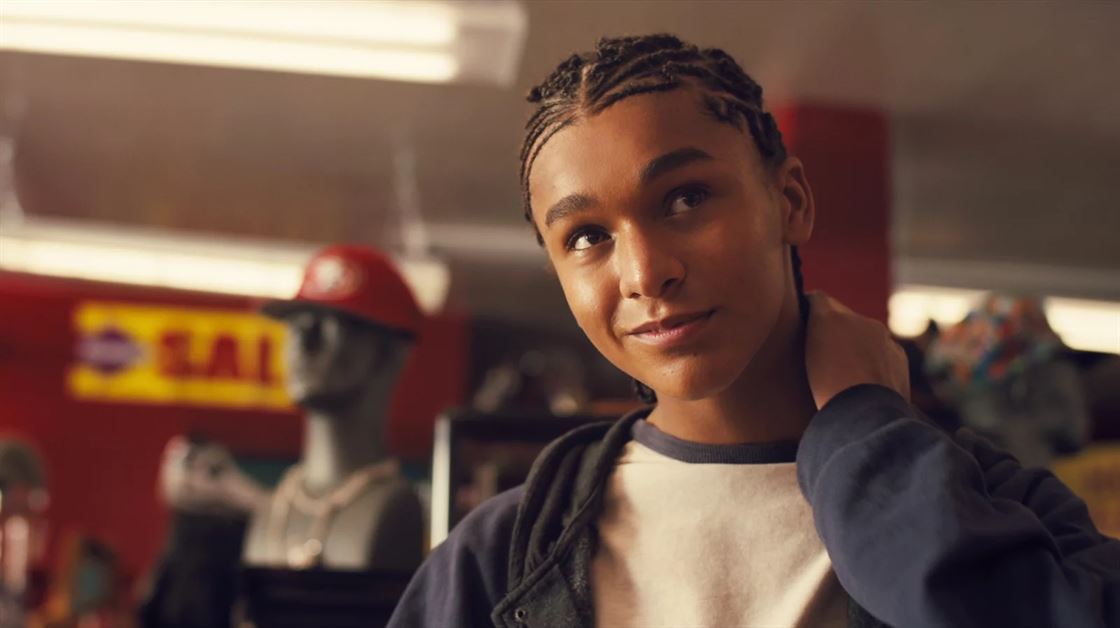The Netflix series, “Colin in Black & White,” released on Oct. 29, 2021, follows Colin Kaepernick, a former NFL quarterback widely known for his activism and protesting of racial injustice as evident in his decision to kneel during the national anthem at football games.
Directed by Ava DuVernay and narrated by Kaepernick himself, the show depicts his struggles and efforts to fight racism in his middle school and high school days, where he had to deal with doubtful coaches and was surrounded by uninformed, ignorant individuals.
https://www.youtube.com/watch?v=ej42P9FTwZg
Kaepernick is played by Jaden Michael, who does a brilliant job at portraying a young Kaepernick. He himself is a biracial male living in America and can relate to the struggles Kaepernick faced as a young athlete.
Adopted by two white parents, played by Mary-Louise Parker and Nick Offerman, Kaepernick and his family live in the city of Turlock, California, a place that screams no diversity and white privilege.
Growing up with two white adoptive parents gave Kaepernick the idea that their privilege was his privilege, but he would soon find out he was in for a long, brutal ride.
Right from the start, the tone is set by Kaepernick’s narration as he openly speaks about Black history in the sports world.
His narration is less of a TED Talk, and more so an intimate conversation. Although some may feel his narration is too repetitive as scripted scenes already reveal the content, audience members can sense the emotion and feel like they are in the room with him.
While he narrates, strong visuals follow. In one of the scenes, for instance, viewers get to see the striking similarities between white coaches scrutinizing Black professional athletes and the auctioning off of Black men during slavery.
An outsider would never think once about comparing the two, nor think they have anything to do with each other. However, by having Kaepernick and the show’s writers incorporate this visual, it really educates the audience and gives them a look into the harsh reality that racism does run deep in sports.
Kaepernick’s dream of being a quarterback was repeatedly shut down by the cultural and institutional hurdles he had to face. Whether it was his hairstyle or the way he dressed, no matter how talented and hardworking he was, he still felt ignored and out of place.
This stood true for Kaepernick even at home.
His parents are caring individuals but seemed to be quite unaware of the racial bias their son would endure in school. They didn’t realize the impact their naive, yet obvious racism had on him.
Kaepernick also makes a huge effort to educate beyond the sports world, even though the show focuses on struggles he faced as a teenager. The consistent theme of rejection and fallen dreams in his life fueled his activism and choices beyond his teenage years.
Some scenes can be very serious and attempt to force one to understand the struggles of Black athletes and the fight for equality.
With such important and sensitive topics, it may seem like there is no room for humor. However, throughout each episode, subtle jokes are made, which create a balance and put the audience in a more lighthearted mood.
This compelling series is entertaining and thought-provoking, despite the mix of fiction and nonfiction content.
The message and storyline leave the viewer with a strong appreciation and inside view of Kaepernick’s personal struggle to embrace his identity and the sacrifices he made in the fight for racial equality.
Despite what society may think, always remember your race, culture and who you are as a person is beautiful in every way. So, embrace it. More importantly, believe in yourself.






